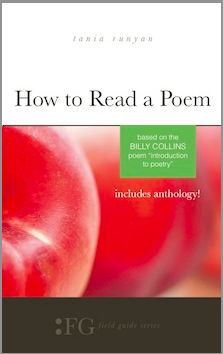Children are naturals at identifying unexpected building toys, and if you’ve ever noticed a little one in a restaurant busily arranging salt shakers, sugar packets, and silverware into buildings, barnyards, and busy highway systems, you’ll know what I mean.
Block play with any materials that can safely be stacked, layered, lined up, built up, and built outward can foster rich mathematical language as well as dramatic storytelling abilities. In fact, one could say that children are physically building stories as they build with blocks. Imagine a child arranging a line of skinny 1-inch blocks end to end along the floor. If you ask him to tell you about what he is doing, you might get a math-like answer, such as “I’m making the longest block wall in the world. Longer than anyone ever before so I am going to need a hundred million blocks.”
Leave him to it, and he will use every block he can find to build that longest wall, and when he runs out, he will improvise or beg for more of what he needs. He is developing ways of thinking and speaking mathematically, which will grow in sophistication as he returns to block play and as he talks with others about what he’s doing. It’s not surprising that engineers say construction toys inspired their careers.
Another child arranging blocks in the exact same way might provide quite a different response, such as “My train doesn’t have a track, and I said Don’t worry Train, I’ll make one for you, and so I am building a track for my train.”
Leave her to it and her project will no doubt expand in size, shape, and story. If you check in later and ask, “So, how are things going?” she might lean back, stroke her chin, and perched upon two sneakers with blinking lights built in, proceed to “read” the story on the floor, pointing as she goes.
“Look (points to train)! My train drove aaaalll the way down the track and under a bridge (traces the track with her finger and stops at the blocks built up over the track) and then this kid (points to plastic figure of a child) threw a huge rock off the bridge (points to solid wad of paper on the ground near the train). The rock hit the train (adding smashing sound effects and fist slapping gestures)! The train flew off the track (points to the train, its front wheels off the track). I had to call 911 because the driver was hurt really bad (imitating certain details from a local story that had been in the news and likely on her TV at home).”
She looks around and wrinkles her face. “Wait … I need to make the ambulance place!” She jumps up and takes giant steps over her track and heads to the block shelf, shoes blinking, to gather more materials … and so it goes and grows.
Now it’s chicken or egg time. Which led to what? Did the story give way to the block structure, or was it the other way around? It doesn’t take much mental stretching to see that there is a lot of early literacy being developed, and the groundwork for storytelling is being set. You might even say that the building blocks of written language are being laid. She has, after all, combined a lot of pieces into one dramatic telling with a beginning and middle and with the end yet to be determined somewhere down the track.
With blocks as catalyst, these children are describing situations, making plans and carrying them out, expressing their ideas, and deciding what will come next. I don’t know about you, but it’s hard for me to say what this is most like: a story or a block structure?
Have you ever noticed that when we talk about language we often use words related to construction? We say things like build sentences, construct story lines in dovetailed sections, strengthen the foundation, and create a blueprint. Sometimes we even have to shave a little off. I can smell the sawdust now. And isn’t it interesting that both a book and building can have more than one story?
The physicality in block play seems to translate to language, too.
- What if, while construction materials provide children opportunities to build concrete structures, they also, at the exact same time, clear the ground and prepare the foundation for the abstract processes of reading comprehension and written expression?
- What if, while children are learning to line up blocks end to end, building straight up, creating enclosures, and adding story upon story limited only by the height of their 4-year-old frame and the number of blocks at their disposal, they are also creating cognitive pathways for joining letters into words, words into sentences, sentences into paragraphs, and paragraphs into stories?
This is how I envision the gradual emergence of abstract thought from concrete experiences. It seems to me that through constructive play children use their hands and bodies to build their minds. (In fact, some research suggests that the use of your hands—to build, fix, play—is indeed connected to greater cognitive development.)
A friend of mine from graduate school once said “If I could have only one material in my [kindergarten] classroom I would say give me blocks and lots of them!” Excellent choice, Evelyn. Excellent choice.
Photo by fdecomite, Creative Commons, via Flickr. Post by Donna Z. Falcone.
For Further Reading:
4 Reasons Why Your Child Needs Building Toys for Language and Creativity Development by Monica Sharman
Can Lego bricks and other construction toys boost your child’s STEM skills? by Gwen Dewar, Ph.D.
The Importance of Play, Particularly Constructive Play, in Public Library Programming by Sue McCleaf Nespeca for the Association for Library Service to Children
You might enjoy our “Incidentally” columns on the role of toys and play in teaching:
Incidentally, Yahtzee is an English Game
Incidentally, That Play-Doh Could Prevent a Homicide
Incidentally, That Lego Could Earn You Six Figures
__________________________

“I require all our incoming poetry students—in the MFA I direct—to buy and read this book.”
—Jeanetta Calhoun Mish
- From Artist’s Way to Museum Art Camp - November 14, 2018
- 10 Surprising Ways to Help a Child Learn to Read - April 26, 2017
- Emotional Literacy in the Preschool Classroom - March 2, 2017

Maureen says
Nice to see you writing here, Donna.
Donna says
Thank you, Maureen!
L. L. Barkat says
This totally made me smile: “and with the end yet to be determined somewhere down the track.”
The overall intelligence of this piece made me smile (I love when you speak your native teacher language).
And of course it makes me smile to think of all those years I told my kids that what they called “playing story” (which was a combination of block and doll play) was really “writing.” Why do we have to see a pen and paper in their hand to recognize writing? It’s here, long before fine motor skills catch up. And it’s usually far more dynamic. I stand by my decision to let them “write” through playing story, for hours on end. These days, they sometimes play story just for kicks and it underlies, I think, the way they now co-write things like the Loki Goodness Campaign (published here onsite 🙂 ).
I would love to hear more from your teacher-mind.
Donna says
I stand by you in standing by your decision. 😉
Imagination is the key to all that we hope to nurture in what we call reading readiness and literacy – and it’s a very long story for this box, but as you know, it begins long before writing and reading, and it extends throughout life. I’m so passionate about this – it pains me deeply to see “pre-reading readiness’ and ‘literacy outcomes’ passed off as play these days. Ouch.
Art, too, is overlooked and trivialized. Oh my goodness. Ouch and ouch.
Thank you so much for the opportunity to share this here. 🙂
L. L. Barkat says
One could even argue that reading without “imagination” is not literacy at all. It’s just decoding. And I’m guessing we can teach even the chimps to do a bit of that 😉
Donna says
HA! Yes!
Donna says
I think you need to hear my basketball drawing story. Well, maybe you don’t need to hear it lol… but I need to write it. And I will. Soon.
Sandra Heska King says
“She jumps up and takes giant steps over her track and heads to the block shelf, shoes blinking . . . ”
If I had lights in my shoes, they’d be blinking while I jump up and down all giddy over this piece. High five, Donna.
Donna says
I always ask little kids if those shoes come in grown up sizes…. 😉 So far, I am only hearing ‘no’ (followed by giggles). 😉 Thank you Sandra. 🙂
michelle ortega says
Donna, this is an excellent piece “exploring” the connection between play and language~as a pediatric speech-language pathologist, I can attest to the sensorimotor needs children have as they are making language-sense of the world around them! At my practice, the occupational therapist and I work closely together to ensure movement and communication goals are integrated across activities~including “homework” that play-based like the block “activities” you highlight.
Thank you for sharing your expertise here~for me, this is truly a “poetry at work” moment!
Donna says
Michelle, that’s wonderful that you two are able to work so closely! The children are so fortunate.
Do you see that the physical actions in their play reinforce their thought patterns, remembering, creating constructs, etc?
It’s all so fascinating.
Thank you for your feedback! Poetry at work. 🙂 Love it!
Bethany Rohde says
What a fascinating post and set of comments.
“It seems to me that through constructive play children use their hands and bodies to build their minds.” Wow. Love this, Donna, thank you for writing it.
Donna says
Thank you Bethany!
Charity Singleton Craig says
Donna – I loved so many things about this piece: the storytelling, the voice of experience, the speculation, and the indirect encouragement to buy blocks and other creative toys for my nephews for Christmas.
Interestingly, I just met a woman who works with young children and parents in our community through a program called block parties. You guessed it: she’s helping parents understand the importance of block play.
Donna says
Charity, I love it when little ‘coincidences’ like that come along. 😉 Very cool.
I sent my great nephew a set of his first wooden blocks for Christmas – I can’t wait to see how he uses them. He’s pretty young, so he may just carry them around in his pockets or a bag for a while, but that’ll change. 🙂
Thank you, Charity. 🙂
Charity Singleton Craig says
By the way, I sent a link for your essay to the woman I just met, and she loved it!
Donna says
Wow. Thank you!